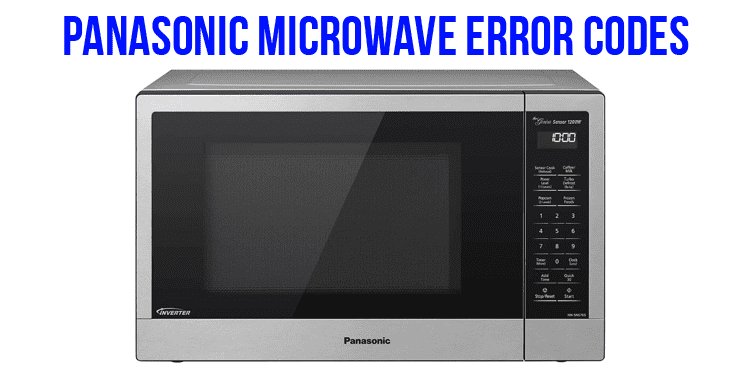
Here’s the deal: microwaves are complex machines with various components working together to heat food. When your Panasonic microwave displays an error code like E2, it’s essentially waving a little red flag, telling you something’s not quite right. Ignoring this could mean more than just a cold meal — it might lead to bigger issues down the line, possibly turning your microwave into an expensive paperweight. So, let’s dive in and demystify what this error code means and what steps you can take to address it.
What Does Error Code E2 Mean?
When your Panasonic microwave flashes an E2 error code, it’s its way of saying something’s awry with the temperature sensor or the voltage supply. Think of the temperature sensor as a thermostat. It’s the component that tells the microwave when to stop heating so your food doesn’t turn into charcoal. If the sensor isn’t working correctly, you might end up with undercooked meals or, worse, a kitchen full of smoke.
What’s behind this pesky error? It could be a faulty sensor, wiring issues, or even a glitch in the microwave’s control panel. In some cases, changes in the electrical supply, like a power surge, can trigger this code. Just as a hiccup in your internet can cause the dreaded buffering wheel, disruptions in electrical flow can confuse the microwave.
So, should you ignore it? Probably not. While your microwave might still operate with an E2 error, continuing to use it without resolving the issue is akin to driving a car with the check engine light on. Sure, you might get where you’re going, but at the risk of causing more damage. Addressing the error early can save you from more costly repairs or having to replace your microwave altogether.
How to Troubleshoot and Fix Error Code E2
First things first, let’s tackle this issue head-on. The simplest step is to unplug the microwave for about ten minutes. This allows the device to reset itself, much like rebooting a computer. Believe it or not, a simple reset works wonders for many small electrical issues, and you might find that the error code disappears when you plug it back in.
If the problem persists, it’s time to roll up your sleeves and inspect the temperature sensor. This part is typically located inside the microwave, and accessing it might require a bit of handiwork. Before you start, ensure your microwave is unplugged to avoid any electrical shocks. Consulting the user manual or watching a few tutorial videos can be immensely helpful. If the sensor looks damaged or you’re unsure, it’s best to consult a repair technician to prevent any accidental damage.
Sometimes, the issue might be more complex, like faulty wiring or a control board that’s on the fritz. In these cases, professional help is recommended. Attempting to fix advanced electrical components without proper knowledge can lead to more harm than good. Most importantly, remember that your safety comes first. If ever in doubt, calling in a professional is worth the peace of mind.
Preventing Future Error Codes
Once you’ve tackled the E2 error, you might wonder how to prevent it from happening again. One of the best things you can do is ensure your microwave is properly installed and connected to a stable power source. Avoid using extension cords, and make sure the outlet provides the correct voltage as specified in the user manual. This simple step can protect your appliance from voltage fluctuations.
Regular maintenance is another key aspect. Just like you’d clean your oven or toaster, keeping your microwave clean from food splatters and spills helps maintain its efficiency. Clean the interior regularly with mild soap and water, avoiding harsh chemicals that might damage the components. Additionally, inspect the door seals occasionally to ensure they’re in good condition, as a poor seal can cause heating inefficiencies and put a strain on the sensor.
Lastly, be mindful of what you’re placing inside the microwave. Some materials, like metal or certain plastics, can interfere with its operation and potentially cause errors. Stick to microwave-safe containers, and if you’re ever unsure, a quick check online or in the manual can provide guidance. By being proactive, you’re not just preventing small errors but also extending the lifespan of your trusty kitchen companion.
In conclusion, while the E2 error code might seem like a minor nuisance, it’s a sign that your microwave needs a bit of attention. By understanding what it means, taking the right steps to fix it, and implementing preventative measures, you can ensure your Panasonic microwave continues to serve you well with every delicious meal it heats up.